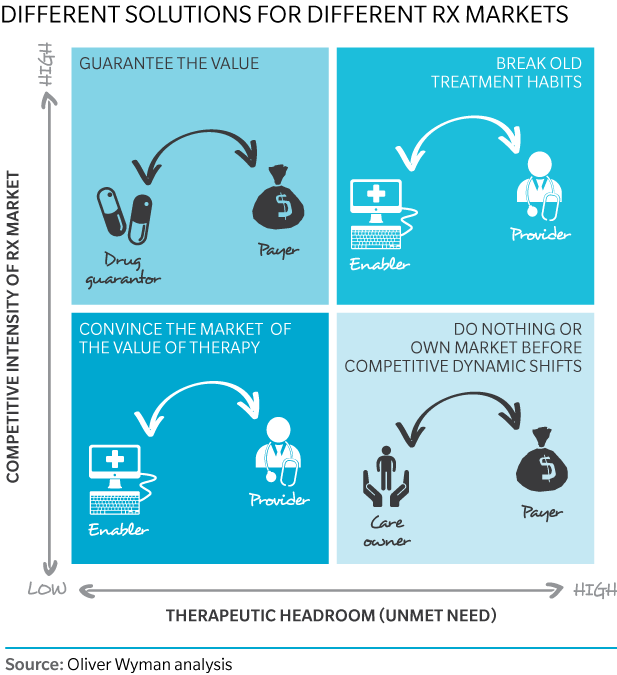Our Value Solutions webinar introduces a more strategic approach to creating value for patients, providers, and payers. Learn how to improve the standard of care and enhance a pharma product’s commercial value proposition by applying a strategic framework and methodology customized to the needs of specific customers and disease markets.
Choosing a Value Strategy
Different markets require different strategies, depending on the level of competitive intensity. What will work in a crowded market with well-managed patients will not work in a growing market with high unmet need. Pharma companies have three basic options: They can enable improvements to the standard of care; they can guarantee performance or level of utilization of drug; or in some cases they can serve as a care owner, coordinating care delivery and assuming financial risk for a population of patients.








